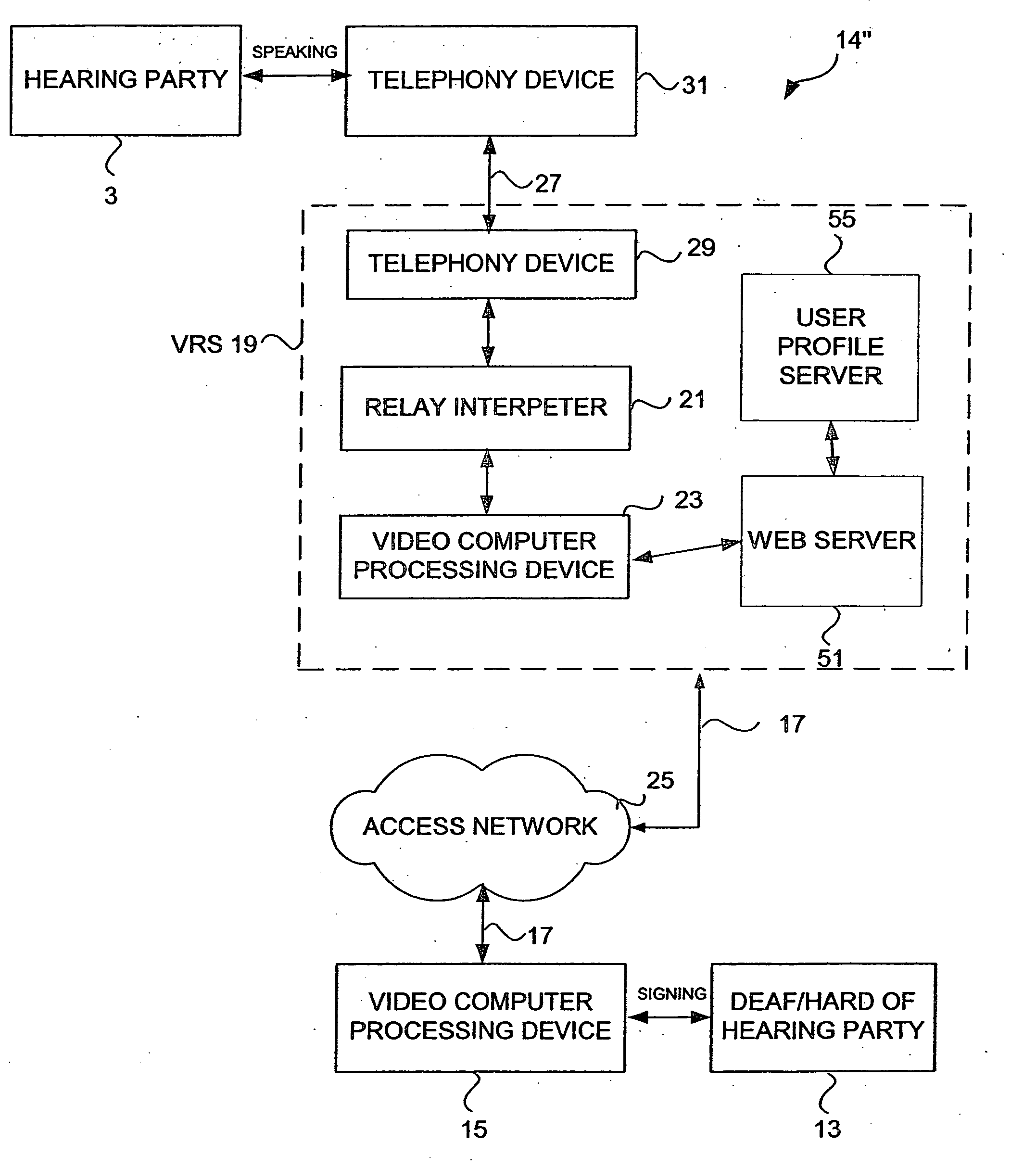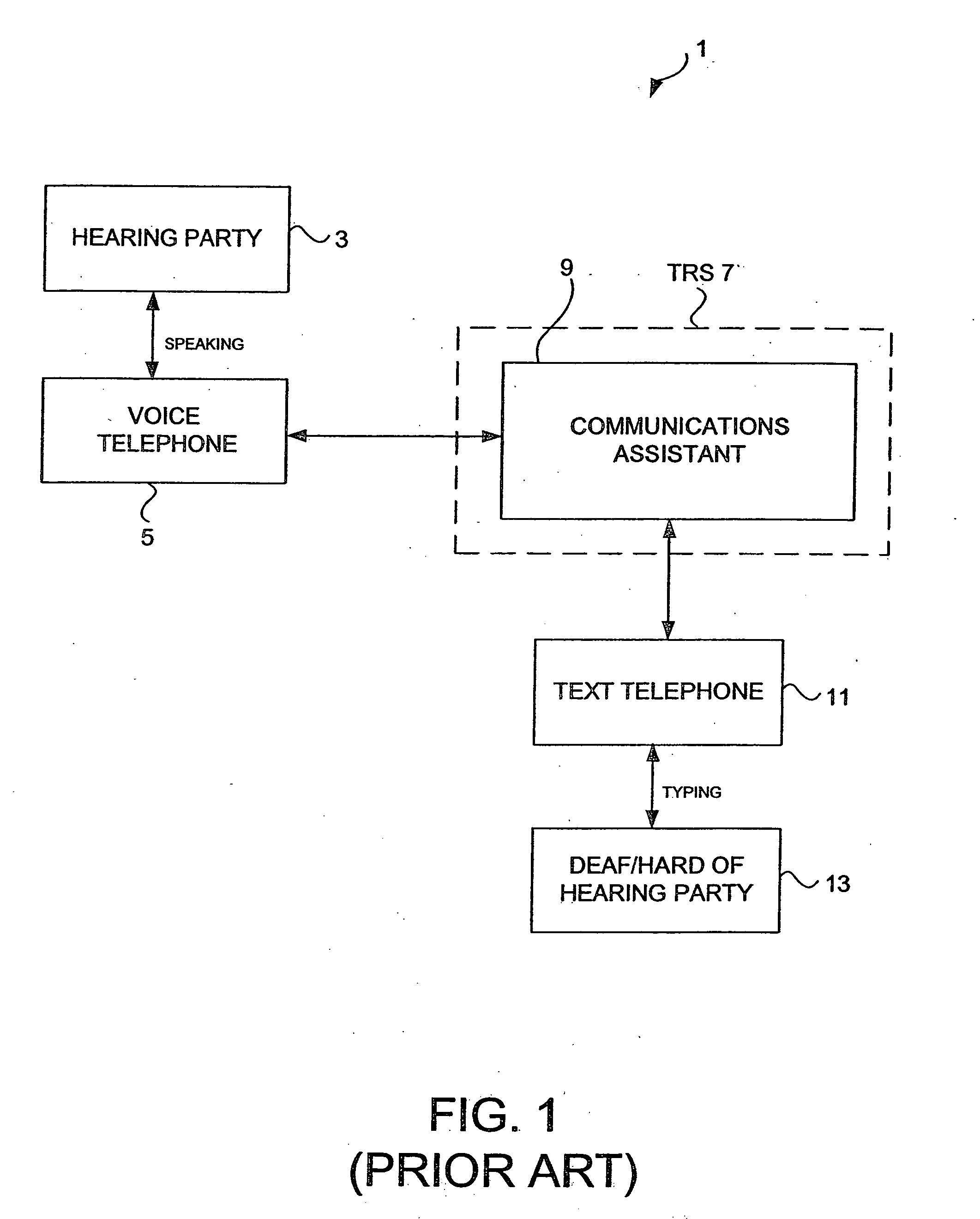Enhanced communications services for the deaf and hard of hearing cross-reference to related applications
a communication service and deaf and hard of hearing technology, applied in the field of communication processing, can solve the problems of cumbersome and unnatural communication flow in this text-based environment, ineffective communication, frustration and unnatural for some individuals, and the speed of typists can be limited to two-way communication and the effect of facilitating communication and effective communication of information
- Summary
- Abstract
- Description
- Claims
- Application Information
AI Technical Summary
Benefits of technology
Problems solved by technology
Method used
Image
Examples
first embodiment
[0023]FIGS. 2-8 illustrate preferred embodiments of a system and method of providing enhanced communication services for deaf and hard of hearing individuals. For ease of explanation the terms “deaf or hard of hearing” referred to a person who is deaf, hard of hearing, or speech-impaired. Likewise, the term “hearing party” or “hearing person” refers to a person who able to hear and speak into a telephone or similar device. Referring to FIG. 2, there is shown a system and method for providing a video communications relay network 14 of the present invention. As a functional overview, the illustrated a video relay service enables deaf individuals to access a live sign language interpreter via a communications network, such as the Internet or World-Wide-Web, so as to use sign language to communicate with the hearing party via the voice of the interpreter. Advantageously, the deaf party converses in a natural language that enables more effective communication of information.
[0024] Referr...
second embodiment
[0043] To form the video message, deaf / hard of hearing party 13 communicates, via VCPD 15, in sign language to relay interpreter 21. In block 69, according to the invention, there are two modes of messages that can be left for hearing party 3—a voice mode or a video mode. In block 71, deaf / hard of hearing party signs the message to interpreter 21. In block 73, relay interpreter 21 records a voice message on voice mail server 54 for later playback to party 3. Alternatively, in block 75, in the video mode, relay interpreter 21 may transfer party 13 to video server 53 via web server 51 so that party 13 can record the video message for party 3.
[0044] In block 77, after the voice message or video message is recorded, the relay interpreter or other entity, informs hearing party 3 that a message is waiting from the party 13. Advantageously, relay interpreter 21 provides a message mode identifier (MMI) and contact information to party 3 in an audio or a text message. MMI refers to a voice m...
PUM
 Login to View More
Login to View More Abstract
Description
Claims
Application Information
 Login to View More
Login to View More - R&D
- Intellectual Property
- Life Sciences
- Materials
- Tech Scout
- Unparalleled Data Quality
- Higher Quality Content
- 60% Fewer Hallucinations
Browse by: Latest US Patents, China's latest patents, Technical Efficacy Thesaurus, Application Domain, Technology Topic, Popular Technical Reports.
© 2025 PatSnap. All rights reserved.Legal|Privacy policy|Modern Slavery Act Transparency Statement|Sitemap|About US| Contact US: help@patsnap.com



